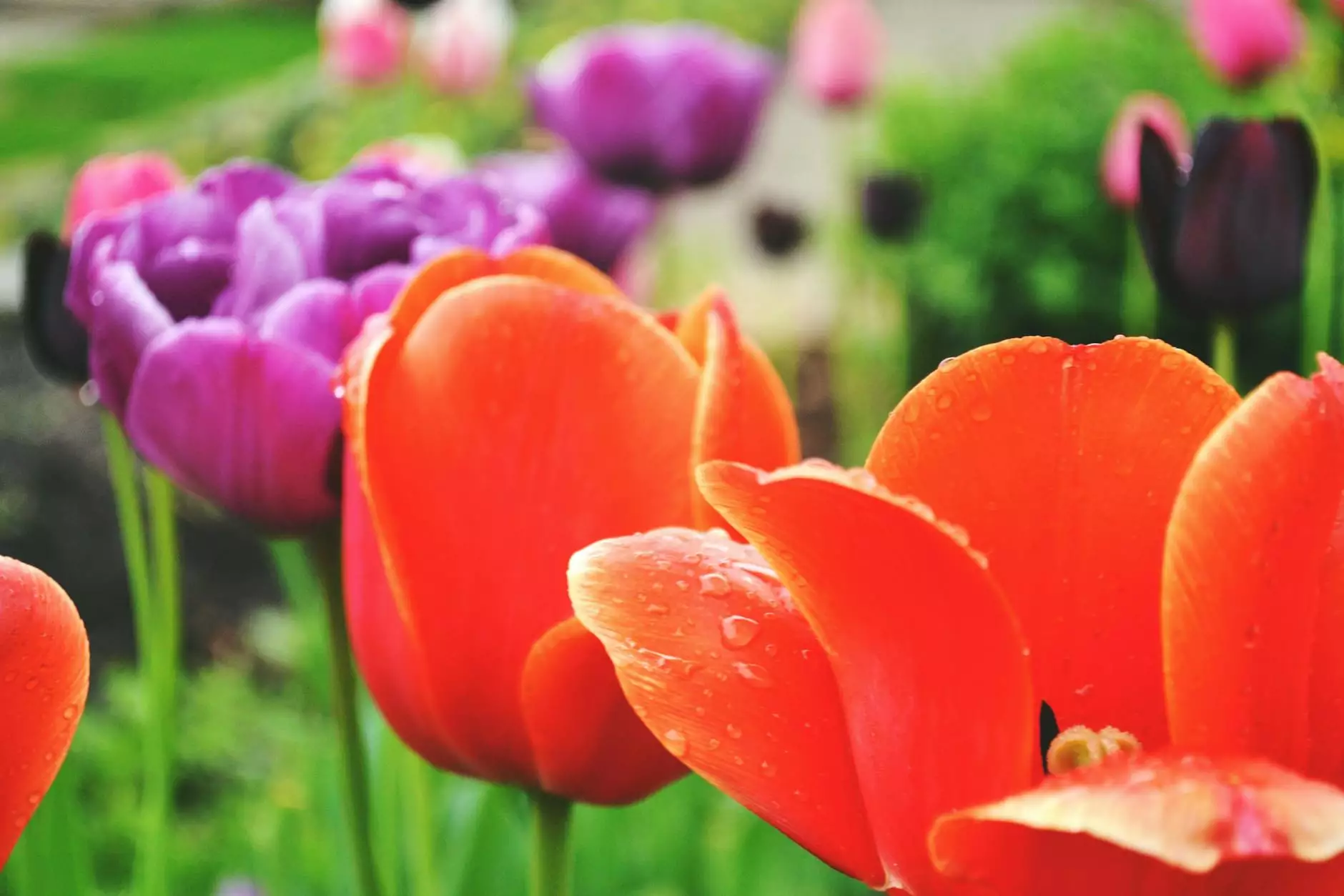Ultimate Guide to Tulip Gardening Tips for Gardeners | Boost Your Blooming Success

Developing a thriving tulip garden requires more than just planting bulbs in the ground. It demands a combination of proper planning, understanding of tulip biology, seasonal care, and an eye for aesthetics. Whether you're a seasoned gardener looking to refine your techniques or a beginner eager to cultivate beautiful tulips, this comprehensive guide will provide expert tulip gardening tips to ensure your garden bursts into vibrant color year after year.
Understanding Tulips: A Brief Overview for Gardeners
Before diving into the tulip gardening tips, it's essential to understand the basics of tulips. Native to regions with a temperate climate, tulips belong to the genus Tulipa and are renowned for their cup-shaped flowers that come in a vast array of colors and sizes. Proper knowledge about their growth cycle, preferences, and vulnerabilities will empower you to create the ideal environment for these stunning bulbs.
Choosing the Right Tulip Bulbs: Foundations for Success
The first step toward a lush tulip garden is selecting high-quality bulbs. Here are key factors to consider:
- Quality and Size: Opt for large, firm bulbs with healthy, undamaged skins. Larger bulbs tend to produce bigger flowers and more vigorous growth.
- Variety Selection: Choose a mix of early, mid, and late-season blooming varieties to extend the flowering period and create a continuous display.
- Climate Compatibility: Select varieties suited to your local climate zone to ensure optimal growth and longevity.
Perfect Timing: When and How to Plant Tulip Bulbs
The timing of planting your tulip bulbs is critical for developing strong roots and abundant flowers. Follow these detailed guidelines:
- Plant in Autumn: Generally, for temperate climates, late September to November is ideal. Cooler soil temperatures promote healthy root development.
- Soil Preparation: Ensure well-draining soil with a slightly acidic to neutral pH (6.0–7.0). Amend heavy clay soils with organic matter or coarse sand for better drainage.
- Plant Depth and Spacing: Place bulbs at a depth of approximately 2–3 times their height (about 4–6 inches deep). Space bulbs 4–6 inches apart to allow for growth and airflow.
- Orientation: Position the pointed end of the bulb facing upward for optimal sprouting.
Creating the Ideal Environment for Tulips: Soil, Sun, and Watering
Providing the right environmental conditions is crucial for tulip gardening success. Here’s a detailed look:
- Sunlight: Tulips thrive in full sun—at least 6 hours of direct sunlight daily. Proper sunlight encourages vibrant blooms and strengthens plant health.
- Soil Quality: Use loose, well-drained soil rich in organic matter. Avoid waterlogged areas as they may cause bulb rot.
- Watering: After planting, water thoroughly to settle the soil. During active growth, maintain moist soil but avoid overwatering. Once flowers fade, reduce watering to encourage bulb dormancy.
Top tulip gardening tips for Maintaining Your Garden
1. Mulching for Protection and Moisture Retention
Apply a layer of organic mulch—such as shredded bark or compost—over your planting beds. Mulching helps regulate soil temperature, retains moisture, and suppresses weeds. During late autumn, mulching also provides insulation from freezing temperatures.
2. Fertilizing for Strong Growth and Vibrant Blooms
Feed your tulips with a balanced, slow-release fertilizer in early spring just as shoots emerge. Once flowering begins, a low-nitrogen fertilizer can promote vigorous growth. Avoid excessive fertilization, which may lead to lush foliage but fewer flowers.
3. Deadheading and Floral Maintenance
Remove spent flowers to prevent seed formation, which diverts energy from bulb replenishment. Cut back flower stems back to the base once blossoms fade, encouraging the plant to put energy into bulb development rather than seed production.
4. Pest and Disease Management
Keep an eye out for pests such as aphids, slugs, and bulb grubs. Use appropriate organic or chemical controls, and ensure good air circulation to prevent fungal diseases like Botrytis. Good sanitation and crop rotation help reduce disease buildup.
5. Post-Bloom Care and Dormancy Preparation
After flowering, allow the foliage to yellow and die back naturally. Do not cut green leaves prematurely, as they provide energy to the bulb for next season. Once foliage has fully withered, gently remove and store bulbs in a cool, dry place if necessary, especially in climates with harsh winters.
Long-Term Tulip Gardening Tips for Sustainability and Beauty
To ensure your tulip garden remains vibrant over the years, consider these long-term strategies:
- Bulb Rejuvenation: Every 3-5 years, lift and divide crowded bulbs to prevent weakening of flowering display.
- Selecting Disease-Resistant Varieties: Choose cultivars with proven resistance to common pests and diseases for more reliable growth.
- Seasonal Soil Improvement: Incorporate compost or organic amendments annually to maintain soil health.
- Winter Protection: In colder zones, mulch heavily or provide bulb covers to prevent freeze damage.
Innovative Techniques to Enhance Your Tulip Garden
Beyond basic care, these advanced tips can help you create a truly stunning tulip display:
- Companion Planting: Incorporate plants like daffodils, hyacinths, and muscari for extended blooms and visual diversity.
- Color Planning: Design your garden with a harmonious color palette or contrasting colors to maximize visual impact.
- Container Gardening: Use decorative pots and containers to display tulips on patios, balconies, or as focal points in the garden.
- Season Extenders: Plant some tulip varieties in protective covers or cold frames to extend blooming periods in colder climates.
Expert Tips from tulips.co.uk for Achieving Garden Brilliance
At tulips.co.uk, our team of experienced gardeners emphasizes the importance of patience, proper technique, and ongoing care. Here are some expert tulip gardening tips to help you achieve garden brilliance:
- Start with Healthy Bulbs: Always source from reputable suppliers that guarantee quality.
- Follow Seasonal Schedules: Adjust your planting, fertilizing, and pruning routines according to your climate zone.
- Use Organic Practices: Favor organic fertilizers and pest controls for a sustainable and eco-friendly garden.
- Observe and Adapt: Regularly monitor your garden, learn from each season, and adapt your techniques accordingly.
The Future of Tulip Gardening: Embracing Innovation and Sustainability
The future of gardening is moving towards sustainability, diversity, and innovation. For tulip enthusiasts and professional gardeners alike, embracing organic practices, resistant cultivars, and environmentally friendly pest management techniques will secure the beauty and vitality of tulip gardens for generations to come. Participating in local gardening communities, sharing experiences, and staying updated with the latest horticultural research from tulips.co.uk will keep your gardening practices ahead of the curve.
In Conclusion: Cultivate Your Dream Tulip Garden with Confidence
Creating a breathtaking tulip garden is an achievable goal with the right knowledge and careful attention. Remember that success lies in understanding your plants, preparing your soil, timing your activities appropriately, and maintaining a healthy environment. Incorporate the proven tulip gardening tips discussed here, and your garden will become a vibrant, inviting haven of color and fragrance season after season.
Thank you for exploring this comprehensive guide. Happy gardening, and may your tulips bloom brighter than ever!









